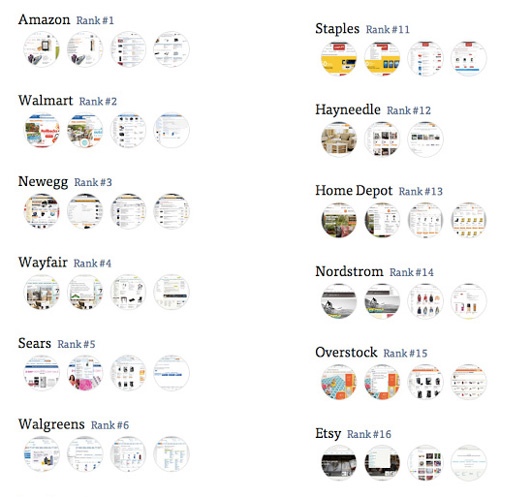When shoppers on your e-commerce site are looking for something, how do you help them find it? A recent study by the Baymard Institute on how top e-commerce brands assist shoppers in their journey shows there’s room for improvement.
Baymard Institute studied and ranked 50 top-grossing U.S. e-commerce websites in terms of search experience and found that when it comes to finding products on demand, the experience fell flat.

A snapshot of the results:
- Of the websites studied, 16 percent did not support searching by product name or model number. Eighteen percent didn’t provide useful results if the product name was off by a single character.
- Seventy percent did not support useful results for variations of a keyword, like, “blow dryer” versus “hair dryer.”
- Queries with symbols or abbreviations – like a quotation mark in place of the word “inch” – were not supported by 60 percent of the websites studied.
- While autocomplete suggestions were available in 82 percent of e-commerce websites, the research stated that “36 percent of implementations do more harm than good.”
- Ninety-two percent of the e-commerce websites studied displayed only one breadcrumb type or none at all for navigation purposes.
- Only 34 percent allowed shoppers to “easily iterate on their query by prefilling it in the search field on the results page, despite the fact that, according to our tests, users frequently need to iterate on their query – on average, 65 percent of test subjects required two or more query attempts during testing.”
- Forty percent had faceted search, which Baymard Institute defines as a “list of filters for product attributes, filters that apply only to a part of the search results.” This number was low, Baymard Institute said, citing it’s “essential to e-commerce search because it is the foundation of contextual filters.”
Last year, Search Engine Watch covered a different study that showed the majority (57 percent) of e-commerce brands were not using their site search data to its fullest capacity to enhance marketing campaigns.
Only about 27 percent used that data to create search-engine-optimized landing pages, and 25 percent used the data for email marketing. Consistent with Baymard Institute research, most (about 63 percent) cited they already had an autocomplete feature.
When improving the search experience using autocomplete results, Baymard Institute says to consider the following:
Given that autocompletion design, and logic will directly alter what most users search for, ensuring the high quality of suggestions by weeding out dead ends and being selective in the inclusion of suggestions is vital. Suggestions based on other users’ past queries should be carried out with special care or avoided entirely; ideally, any machine learning should be based on the success rate (or conversion rate) of each query.
More tips and insight on how to better leverage e-commerce site search are in the post from Smashing Magazine.
